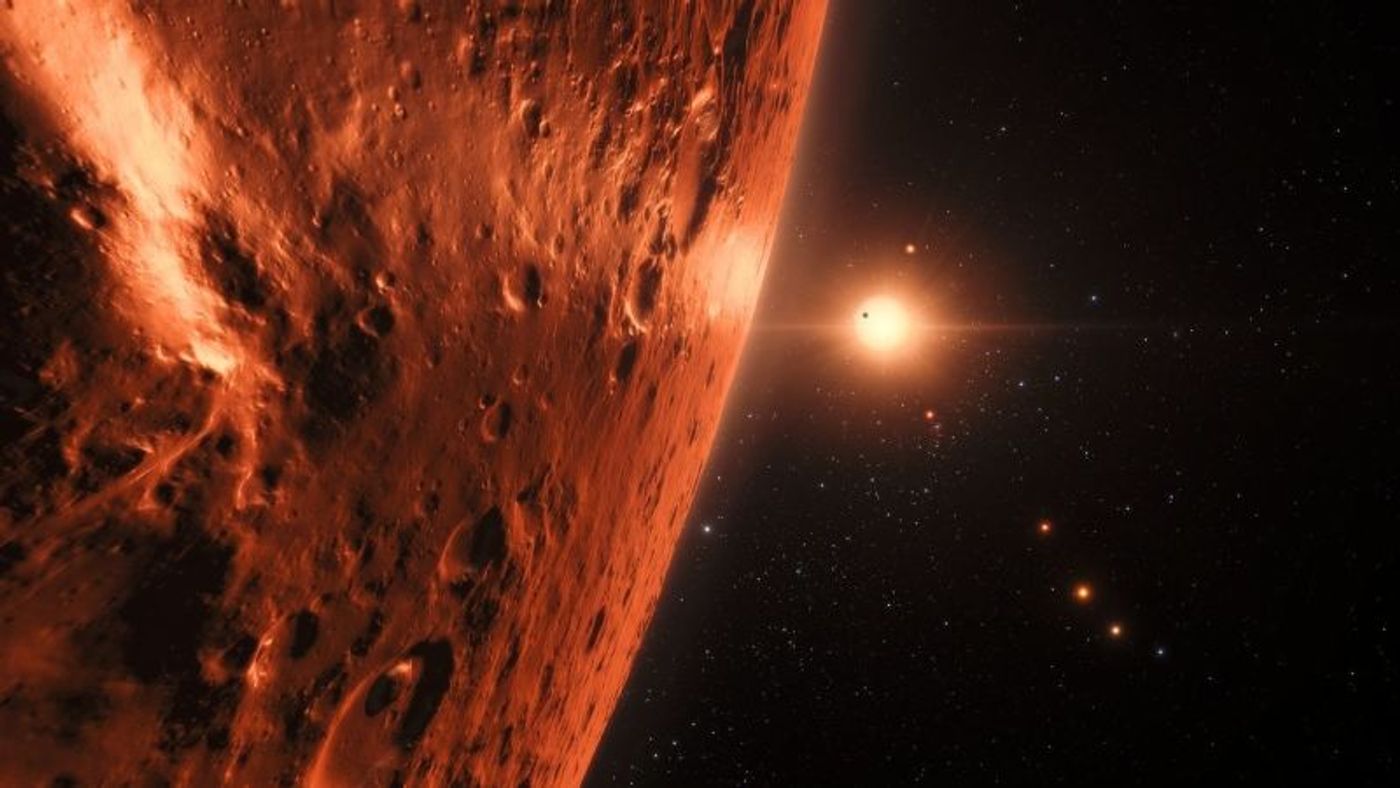Hubble Data Hints Existence of H2O on Some TRAPPIST-1 Exoplanets
One of the biggest questions astronomers can ask after discovering new exoplanets is whether they’re habitable. The presence of water is perhaps one of the most important clues we look for to determine if that’s the case.
Image Credit: ESO/N. Bartmann/spaceengine.org
TRAPPIST-1, which resides almost 40 light years away from the Sun, is one of the most exciting stellar systems astronomers have found to date. It contains as many as seven terrestrial exoplanets, the highest concentration of this class of exoplanet orbiting an alien star ever discovered.
As exciting as that sounds, it gets better. Many of those seven exoplanets orbit the host star within what’s commonly referred to as the ‘habitable zone,’ meaning they could sport liquid water and have an environment capable of supporting life.
The following artistic animation illustrates the mechanics of the seven exoplanets in the TRAPPIST-1 system orbiting the dwarf star at the center:
Until now, it’s been difficult to tell whether any of these exoplanets have water on them, but an international team of researchers led by Swiss astronomer Vincent Bourrier from the Observatoire de l'Université de Genève set out to learn more.
Using the Space Telescope Imaging Spectrograph (STIS) instrument on NASA’s Hubble Space Telescope, the team studied the behavior of ultraviolet radiation acting on the exoplanets of the TRAPPIST-1 system.
"Ultraviolet radiation is an important factor in the atmospheric evolution of planets," Bourrier explained in a statement. "As in our own atmosphere, where ultraviolet sunlight breaks molecules apart, ultraviolet starlight can break water vapor in the atmospheres of exoplanets into hydrogen and oxygen."
Related: Here's what the TRAPPIST-1 system looks like from the Kepler Space Telescope
While viewing data obtained by Hubble, they looked for the byproducts of photodissociation, a process where water molecules are broken apart into lone hydrogen and oxygen molecules after getting struck by high-intensity ultraviolet light.
Hubble can detect the hydrogen molecules that escape an exoplanet’s atmosphere through this process, so spotting the presence of hydrogen around an exoplanet is a key indicator that the exoplanet may sport water.
To their surprise, some of the innermost exoplanets in the TRAPPIST-1 system exhibited much of this behavior, suggesting that they've lost a lot of their atmospheric water through photodissociation.
The innermost exoplanets are closest to the host star. Naturally, they're slammed with more ultraviolet radiation than any of the further away exoplanets, which explains the more pronounced symptoms of photodissociation on just the innermost exoplanets.
On the other hand, these exoplanets don’t reside in TRAPPIST-1’s habitable zone like some of the others do, so the astronomers argue how the exoplanets from TRAPPIST-1's habitable zone may have retained their water because they don't see as much ultraviolet radiation.
Although plausible, it's just a theory and more research is necessary to confirm the findings for sure.
While the limits of Hubble may have already reached capacity, the upcoming James Webb Space Telescope may provide more clues into the habitability of the exoplanets residing in the TRAPPIST-1 system.
"While our results suggest that the outer planets are the best candidates to search for water with the upcoming James Webb Space Telescope, they also highlight the need for theoretical studies and complementary observations at all wavelengths to determine the nature of the TRAPPIST-1 planets and their potential habitability," Bourrier said.
Related: TRAPPIST-1 might be older than originally thought
It should be interesting to learn what else we can dig up on the TRAPPIST-1 system in the meantime.
Source: Science Daily









